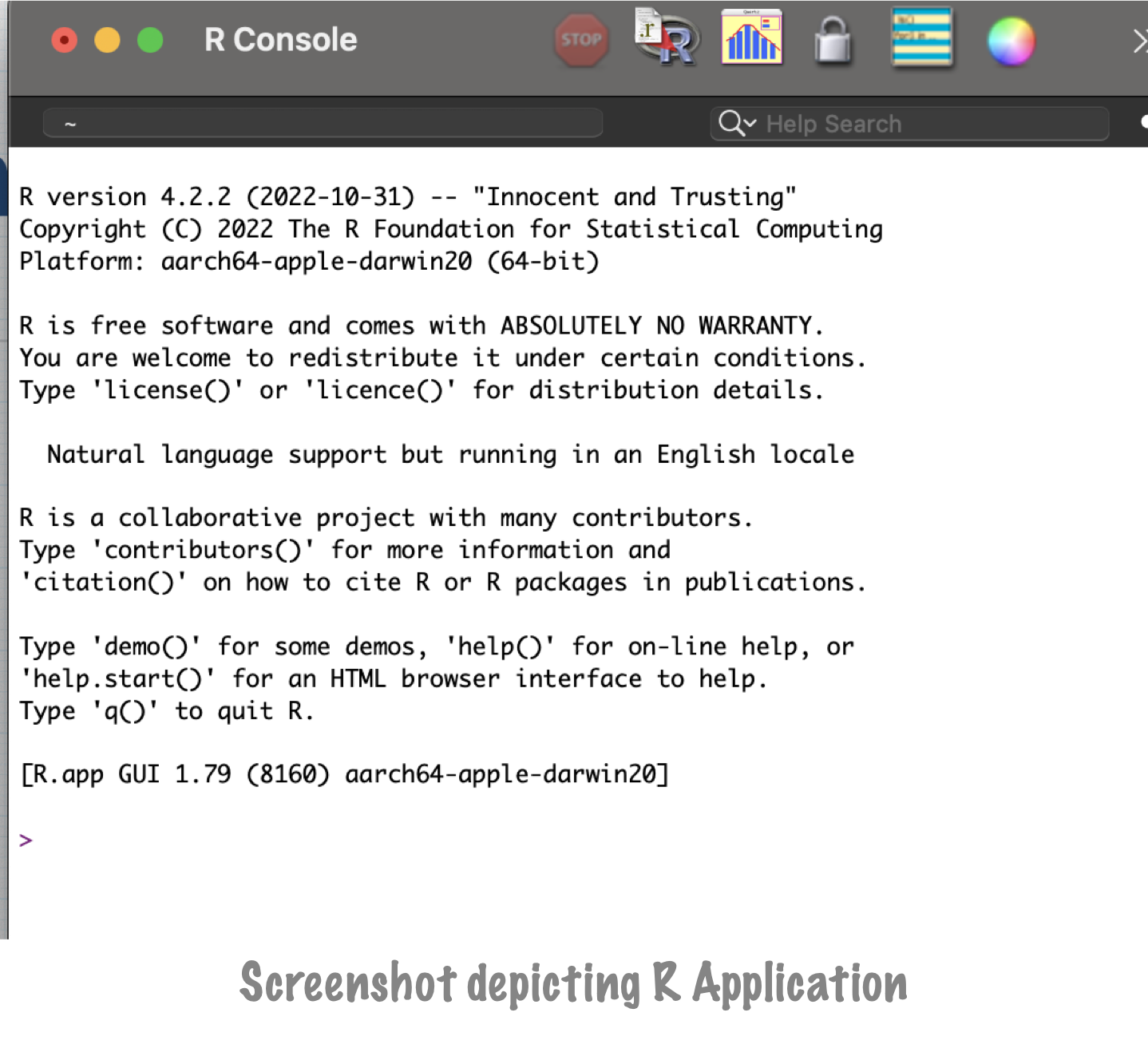
Day 03
Introduction to R and R Studio
EPSY 5261 : Introductory Statistical Methods
Reminder
Get started on Lab Assignment #1!
Learning Goals
At the end of this lesson, you should be able to …
- Explain what R Studio is.
- Explain why we use it.
- Carry out a basic workflow in R Studio for data analysis.
Computing is fundamental to the practice of statistics and science more broadly.
What is R?
- R is a programming language used for statistical computing.
- It is used to write code to communicate to the computer what you want to do with your data.
What is R Studio?

R Studio is an interface for programming in R.
- Allows integration of text and code to produce reports.
Why R Studio?
- It’s free!
- Open source
- Point and click functionality makes it more user friendly than R alone.
- Integration of code and text makes it easy to create reports
- Supports reproducibility and open science goals
Reproducibility
In general:
- Experiments/studies repeated with the same methods and analysis should yield the same results.
In computing:
- Code and data should be provided alongside detailed documentation of analysis so that they can be repeated with the same results.
R Studio & Programming Introduction
R Studio Pane Layout: Pane 1

R Studio Pane Layout: Pane 2
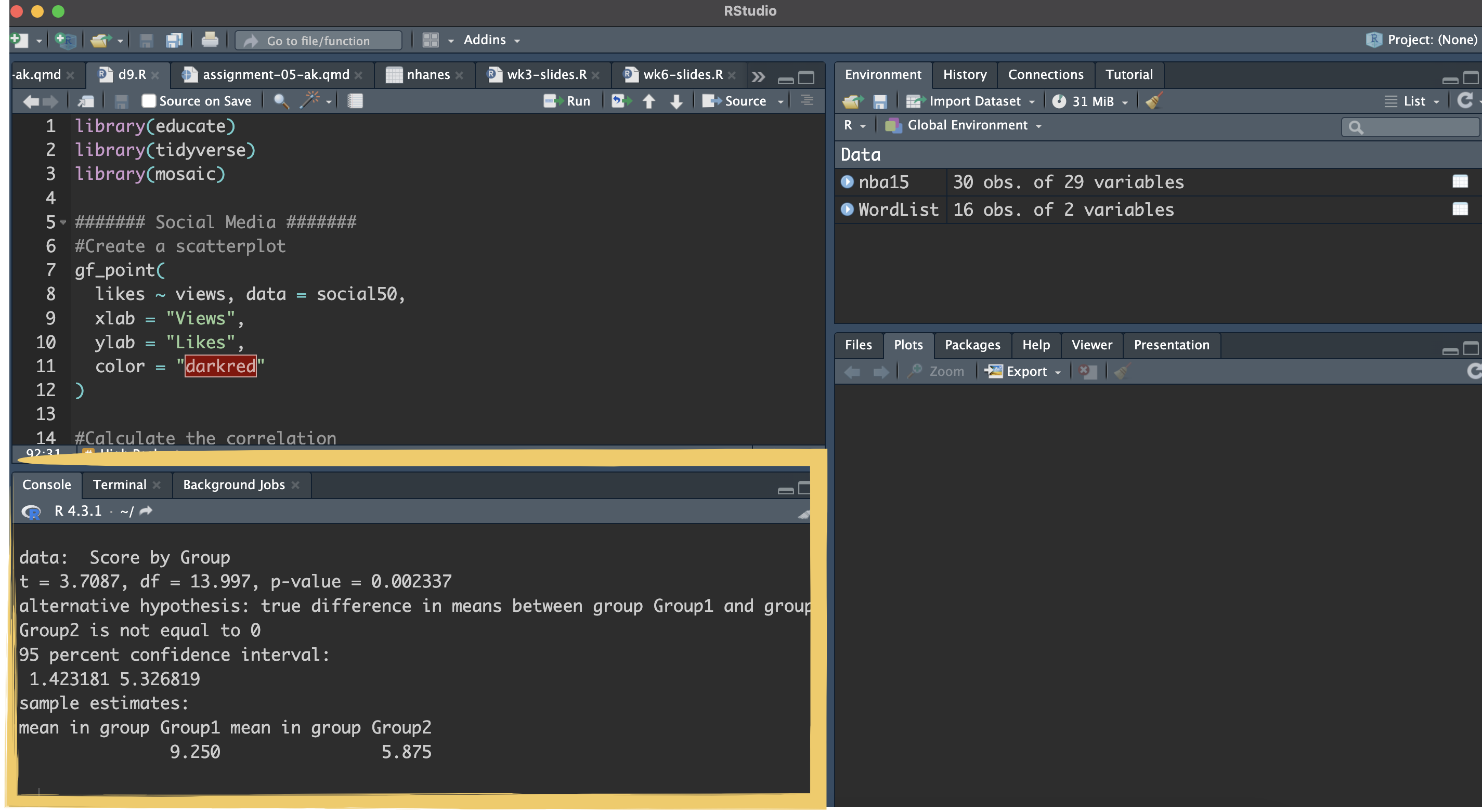
R Studio Pane Layout: Pane 3

R Studio Pane Layout: Pane 4

Protip
You can change the location of the four panes by going to “Global Options > Pane Layout”.
Get the Course Data
ONE TIME ONLY: Download materials from the schedule page on the website.
- There is a zipped folder containing the datasets (.csv).
- Unzip the folder.
Put that folder somewhere easily accessible!
Some suggestions:
- Desktop
- “Grad School” Folder
- On your desktop?
- In your cloud?

Workflow (a.k.a. steps to using R Studio)
- Load libraries (Be sure to install any libraries you do not have.)
- Import data
- Ready to perform analysis!
Open R Script File

Now we start computing…RECALL
Functions
- To perform analyses on your data in R, you will need to use functions.
- Functions tell R Studio what to do with your data.
- Remember, functions have this structure:
- They contain one or more arguments, which specify options for the function.
Libraries/Packages
- Functions live in libraries (a.k.a., packages)
- Some packages come with your R and others need to be installed.
- Install the
{ggformula}and{tidyverse}packages.
Reminder: Use the Install button in the Packages tab in RStudio. You will only need to install the package once!
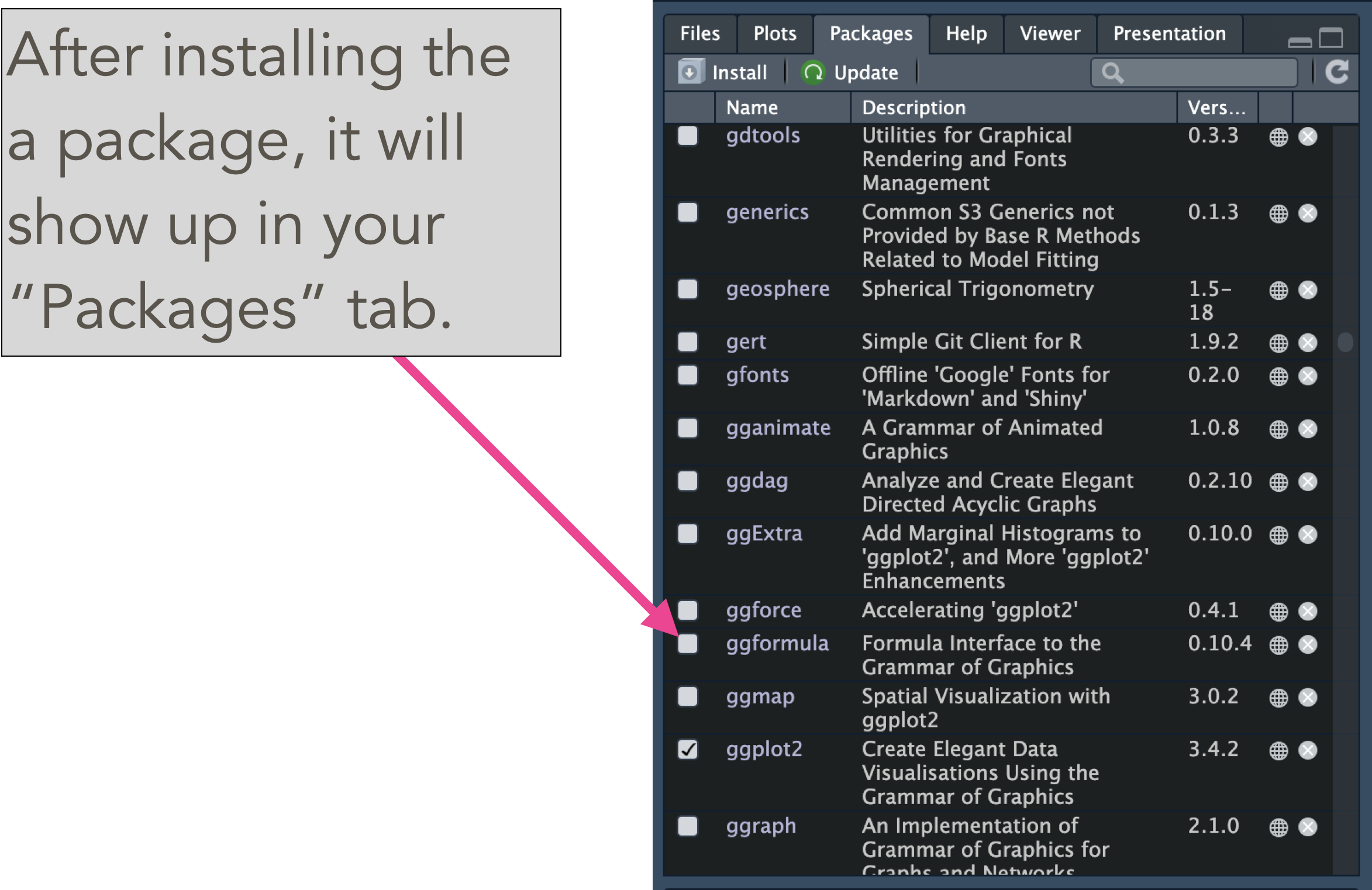
Load a Package
- To use the functions from a particular package, we we will need to load the package (loading and installing are two different things!)
- To load the package and its functions we use the
library()function - You will need to load packages every time you open R Studio
Load Packages (cntd.)
General Example: library(libraryName)
library()is our functionlibraryNamewill specify the library we want to load- To load the
{ggformula}library we would use:

Install vs. Loading
- You only need to install a package once
- But, you need to load that package every time you open a new session in RStudio. (After you load it, all the functions in the library can be used.
- Phone App analogy
Importing Data
- Click
Import Dataset > From Text (readr) - Navigate to your dataset by clicking
Browse
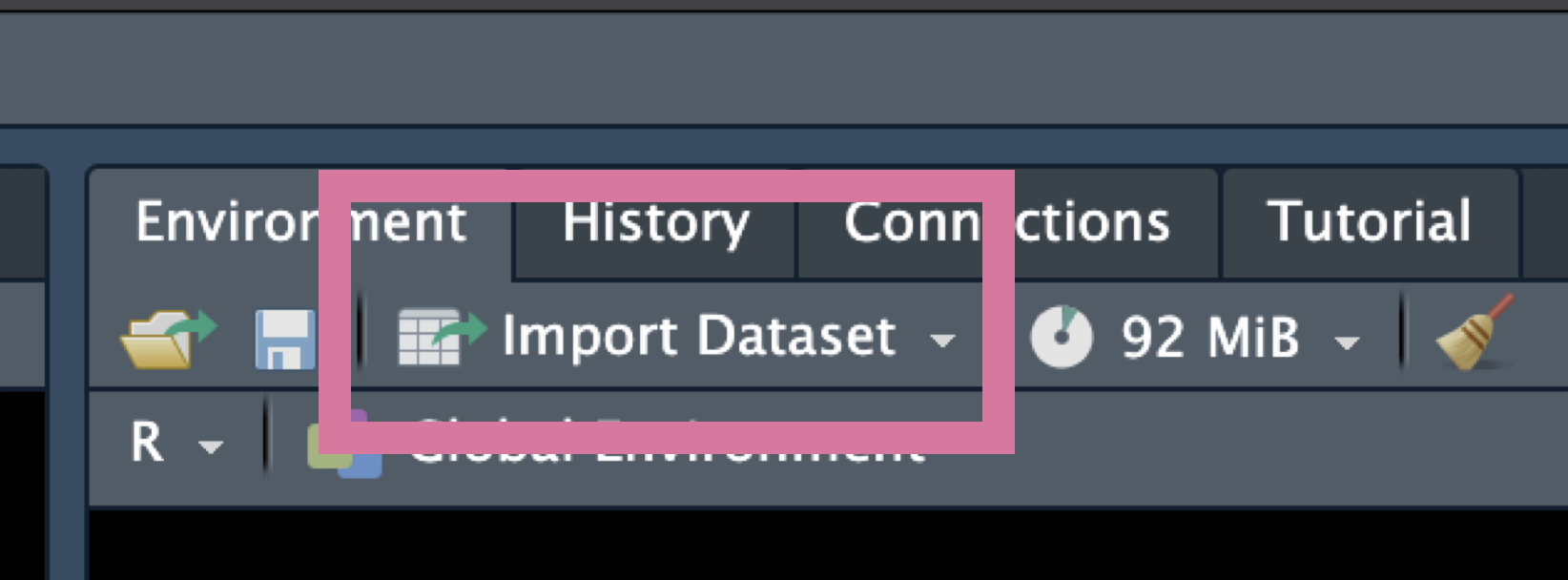

Writing Code
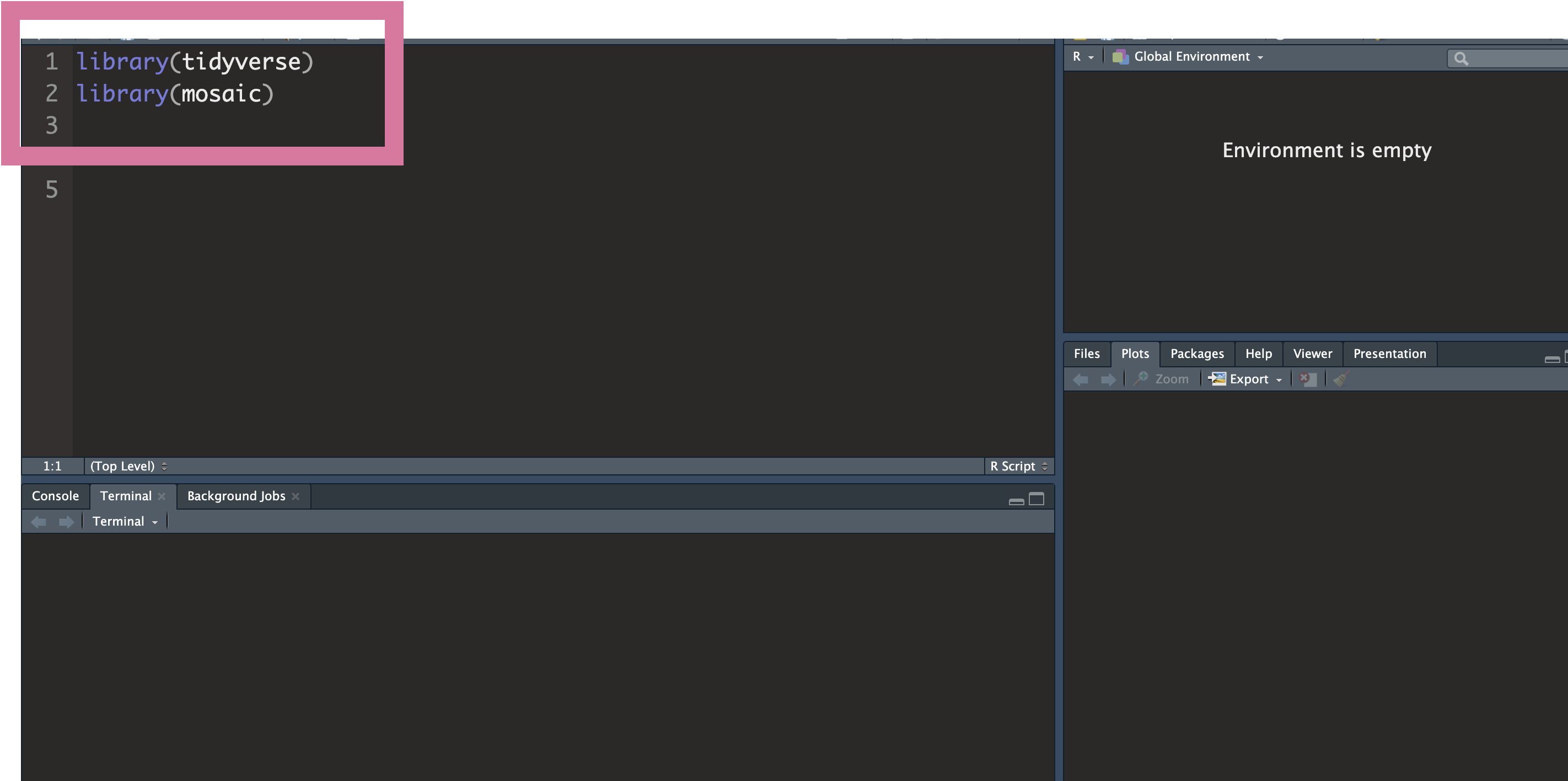
Commenting Code

Executing Code In R Studio
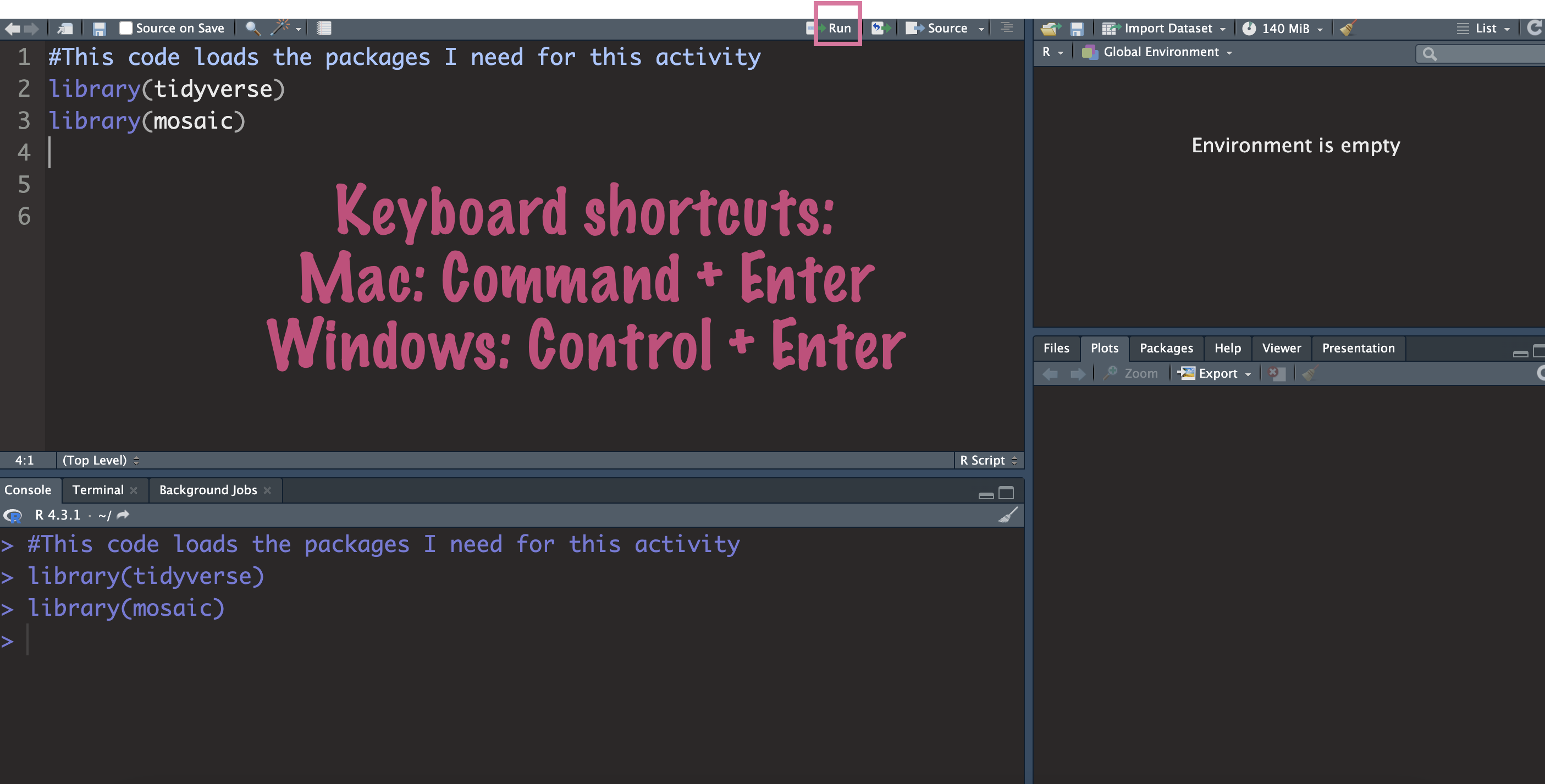
Introduction to R Studio Activity
Summary
- Load libraries (Be sure to install any libraries you do not have.)
- Import data
- Ready to perform analysis!